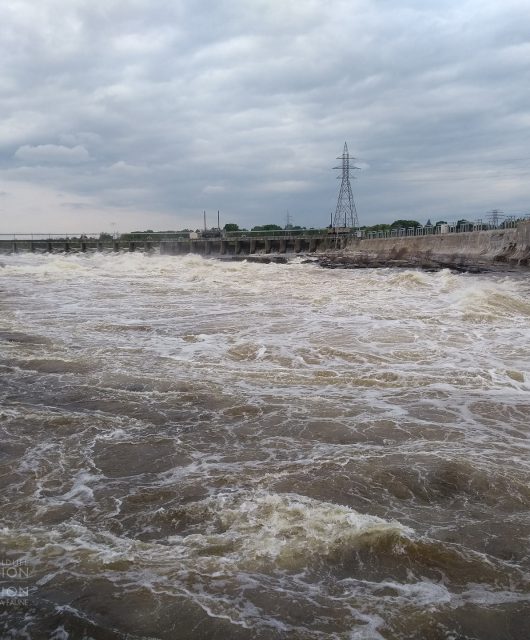Canada is home to a plethora of different wildlife species, many of which are endangered
We have eight species of freshwater turtles across Canada, and all of them are considered at risk. The decline of turtle populations, both in Canada and internationally, are a direct result of human impact. Industrialism and urban sprawl are factors that lead to population decline, and so, too, is road mortality.
While roads are vital infrastructure, it’s important to practice caution; even when driving in rural areas. Roads through rural areas often run next to or through wetlands occupied by turtles. Because of this, turtles often have to cross dangerous roads to move from one wetland to another or in order to nest, which is a journey that is often fatal.
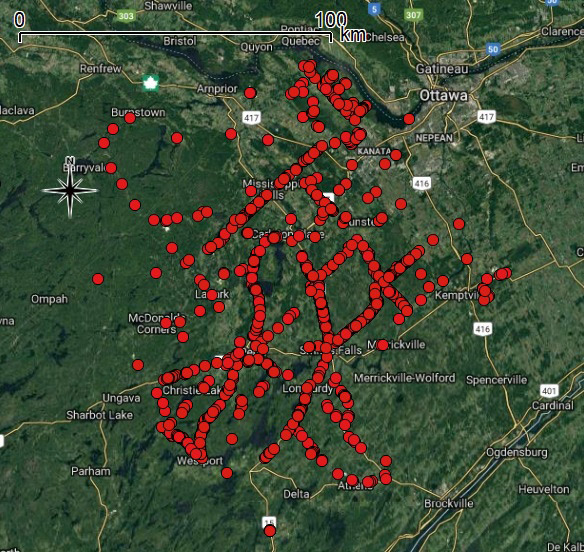
According to research conducted by David Seburn at the Canadian Wildlife Federation, over 2,000 turtles have been found dead on roads in eastern Ontario between 2017 and 2024.
Road mortality is a major factor in population decline with turtles, as it often affects turtles that have reached maturity. Turtles can take 10 to 20 years to reach maturity. Because of this, it’s often very difficult for a turtle to survive to a point where they are able to reproduce.
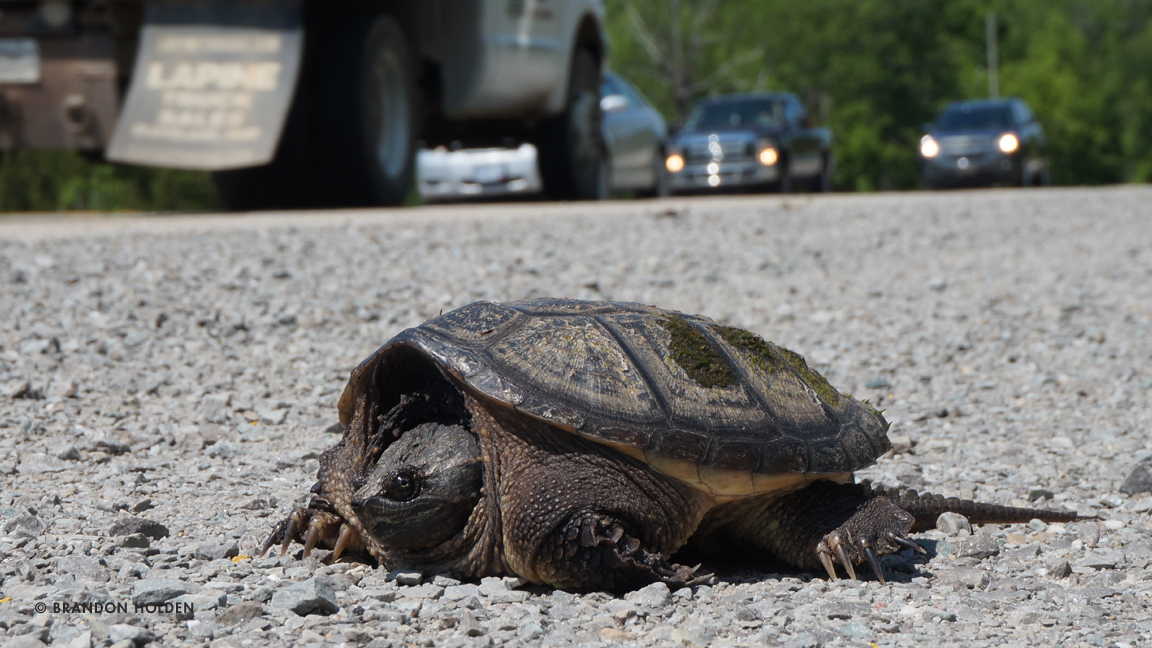
The Snapping Turtle, a species that’s often victim to road mortality, typically lays between 30 or more eggs. Snapping Turtles can live for 50 or more years. The loss of one adult female Snapping Turtle results in the potential loss of 30 hatchlings from that year and all the future clutches of eggs she would lay in the decades ahead.
While many roads are incredibly dangerous for turtle populations, there are things we can do to help them cross more safely. Some roads feature culverts, which are designed to allow water to flow through without damaging the road. These culverts can be used by turtles to bypass busy roads, allowing them to safely cross, but they typically are not used unless there is fencing to direct turtles to the culvert. Without fencing, turtles will usually cross the road wherever they want, rather than entering the passage they need to find to cross safely.
What CWF is Doing
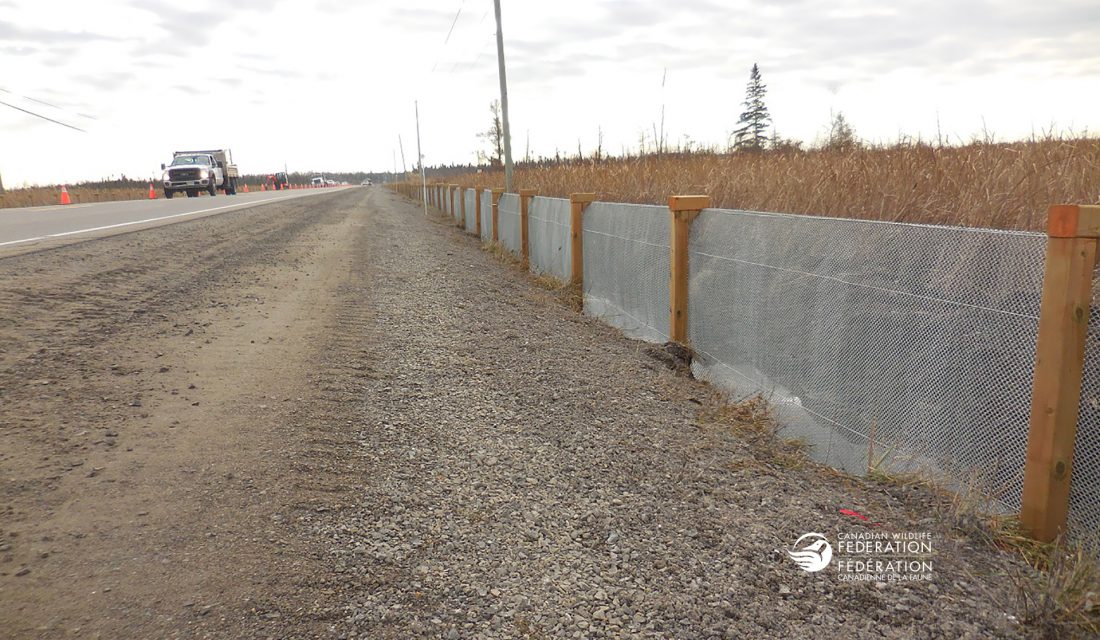
Since 2017, the Canadian Wildlife Federation has been conducting road surveys to identify where turtles are found on roads. From these hundreds of observations we can determine the locations of hotspots – areas where turtles are found on roads in high numbers. The sites with the most turtles are in most need of some kind of road mitigation.T.
The researchers take into account the identified turtle species, as some species are at risk than others. The Blanding’s Turtle, a species that is often at risk of road mortality, is listed as Endangered in Canada as well as globally.
CWF collaborates with the Ontario government or county governments to advocate for the installation of road mitigation at hotspots.
Due to work by CWF, road mitigation has been installed at four of the largest hotspots in Eastern Ontario. This has helped reduce road mortality.
What Can we Do?
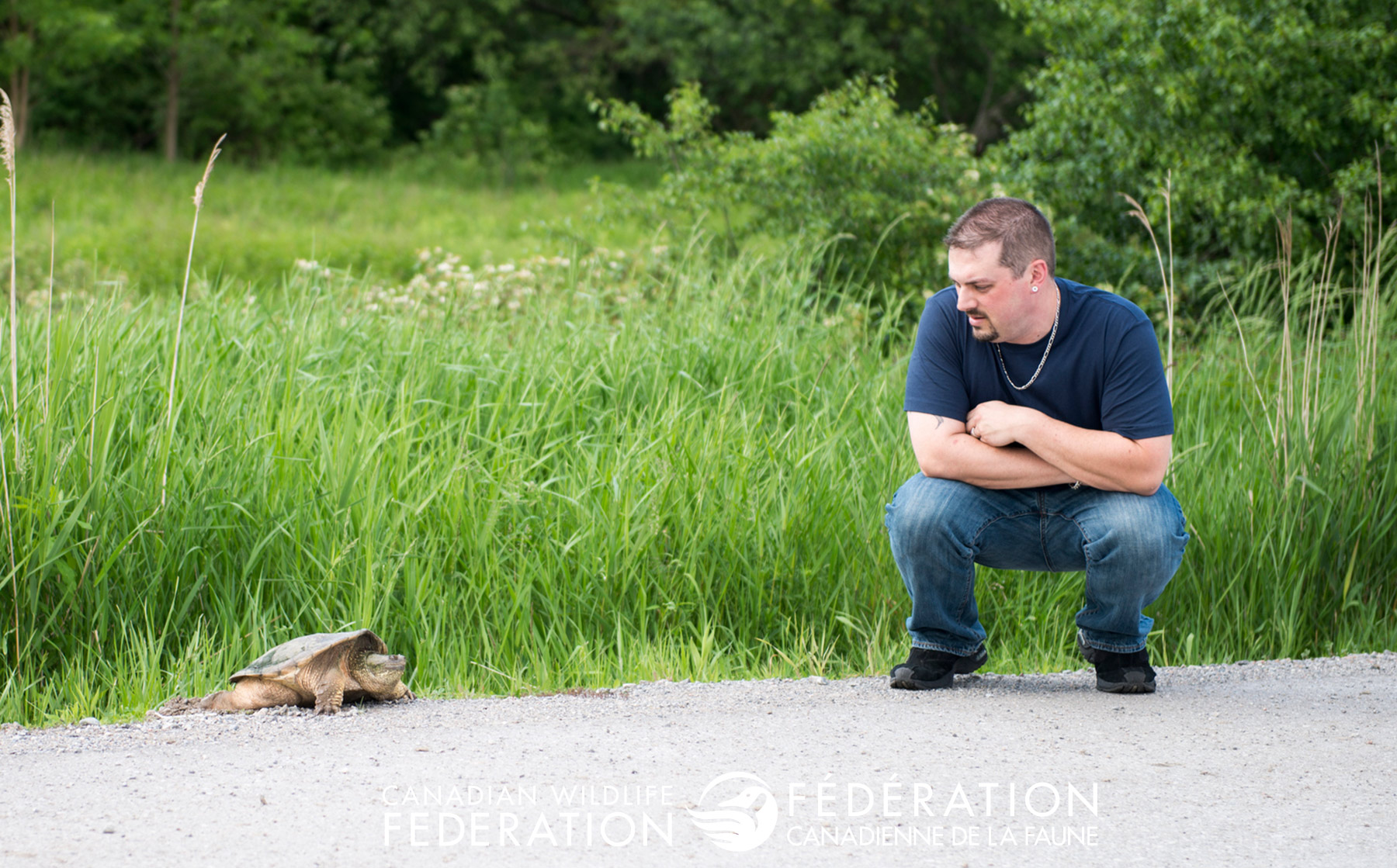
Preventing road mortality is very important for their conservation, and there are a variety of ways you can help.
When driving in rural areas, remember to maintain the speed limit. This will allow the driver to comfortably react if a turtle is seen crossing the road. If you come across a turtle crossing the road, you can help the turtle across the road if it is safe to do so. Make sure you pull over to the shoulder of the road and turn on your four-way hazard flashers. Ensure there is no oncoming traffic by looking both ways, it’s important not to risk your own life.
Assuming the species isn’t a Snapping Turtle, picking up a turtle is easy. Pick up the turtle by using both hands and holding onto each side of the shell and move it to the side it was trying to cross. By using both hands you will be less likely to drop the turtle if squirms or scratches. The turtle may not be aware you’re trying to help it, and may try to protect itself by urinating, so do not be alarmed if this happens. Snapping Turtles can be relocated by gently scooping it with a shovel.
You can also report the turtle you’ve found by adding your observation to iNaturalist Canada. By simply taking a photo of the species and marking the location, scientists can use this important information to dictate the location of turtle hotspots and help aid the situation.
Turtles have been present in these ecosystems long before humans have, yet they have suffered greatly due to human interference. While factors such as climate change are complex, road mortality is a threat that is easily preventable.
About John Hopper
John Hopper is a student journalist at Algonquin College. John Hopper is an advocate for sustainable infrastructure such as bike lanes, greenspaces and public transportation. In his free time, John enjoys reading and going on walks.

